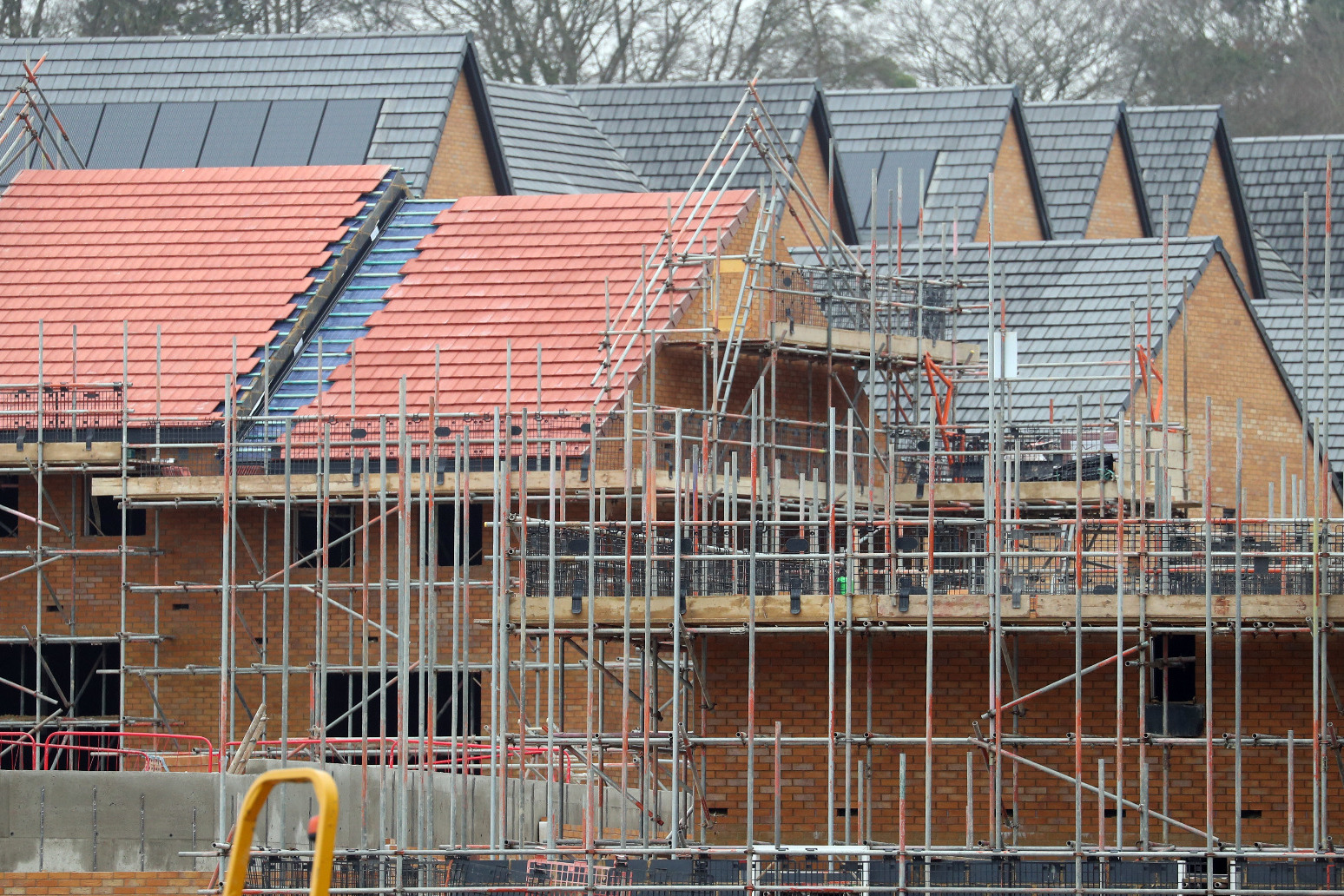
Housing markets where homes cost over £300,000 ‘more exposed to price falls’
That's according to the property website, Zoopla
Housing markets where average property prices are more than £300,000 are particularly likely to be feeling the impact of higher mortgage rates, according to a property website.
Zoopla said areas where average house prices are more than £300,000 may be more exposed to falls in property values.
Its report said: “Some four in five (80%) local markets (or postal areas) currently registering annual price falls have average prices over £300,000.”
The report added: “Higher house prices mean larger mortgages, bigger deposits and a higher household income required to buy a home.
“The more the income needed to buy increases, the more households are priced out of the market, which reduces demand and pushes prices lower.”
The website said there is “a clear split” between trends in southern England and elsewhere.
The report said: “Higher mortgage rates have a greater impact on buying power in southern England where house prices are highest.
“The barriers to first-time buyers are also greater, weakening demand from buyers who support the bottom end of housing chains.”
Across the whole of the UK, annual house price inflation was running at 0.6% in June 2023, down from 9.6% in June 2022, Zoopla said.
House prices continue to increase at an above-average rate in affordable markets next to major employment centres, with the strongest annual price growth being seen in Halifax (4.3%) in Yorkshire, Wolverhampton (3.7%) in the Midlands and Falkirk (3.0%) in Scotland, it added.
Richard Donnell, executive director at Zoopla said: “Higher mortgage rates have hit home-buyer demand once again after a sustained improvement over the spring as mortgage rates fell to 4%.
“House prices increased slightly over the last three months to June but higher mortgage rates and weaker demand mean we expect a return of modest price falls in (the second half of 2023).
“Overall we expect prices to be 5% lower by the end of the year, still 15% higher than pre-pandemic levels.
“The impact of higher mortgage rates is far from uniform across the country. It all depends on housing affordability in local housing markets.
“Activity levels and prices in southern England have been hit hardest by higher borrowing costs while the most affordable parts of the UK continue to see prices rising slowly.”
Matt Thompson, head of sales at London-based estate agent Chestertons said: “Although there still is a vast number of buyers wanting to move as soon as possible, rising interest rates have forced others to be more cautious, review their financial situation and calculate a more conservative budget.
“Whilst this resulted in fewer new buyers entering the market last month, we expect activity to pick up again once buyers have adjusted their criteria and lenders are bringing more products to the market again.
“Recently, the property market has been predominantly driven by buyers who are seeking a home rather than an investment.”
Sarah Coles, head of personal finance at Hargreaves Lansdown, said: “There’s some better news for borrowers on the horizon, because mortgage rates may well be reaching a peak.
“On Thursday, Moneyfacts put the average two-year fixed rate at an eye-watering 6.83%, adding to the mortgage misery of would-be buyers and those set for a remortgage.
“However, ever since inflation figures came in lower than expected last week, we’ve seen a shift.
“The market is pricing in fewer rate rises, so fixed rate mortgages have been getting cheaper. On Wednesday, the average two-year fix was priced at 6.86%. It will take a while for lenders to reprice, but we’ve already seen HSBC and TSB cut mortgage rates, and other big lenders are likely to follow suit.
“We’re not going to see any really big movements while there are concerns that higher rates will stick around for a while, but we may well see rates get back closer to 6%, making life slightly easier for buyers.”
Housing Secretary Michael Gove recently used a speech in London to set out a range of planning reforms.
Labour’s shadow housing secretary Lisa Nandy said: “We will put financial and economic security first, get our economy growing, and take the tough decisions to build more homes to fix the underlying housing crisis.”
The research was released as a separate report from Rightmove found that nearly a fifth (19%) of tenants said that a property’s energy efficiency is a major factor when choosing where to live.
One in seven (13%) homeowners said it is a major factor, rising to 19% for first-time buyers.
Rightmove’s research in April was carried out among nearly 6,000 users of its website and those who took part were self-selecting.
Tim Bannister, Rightmove’s director of property science, said: “The challenge right now is that there are not enough suppliers and equipment for the greenest option to be the most affordable option for homeowners and landlords.”
Published: by Radio NewsHub